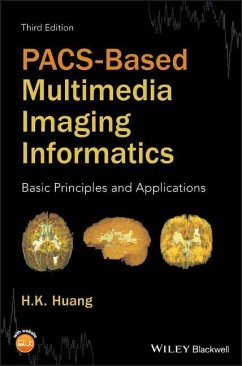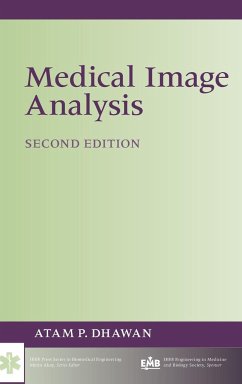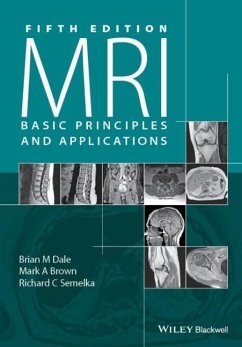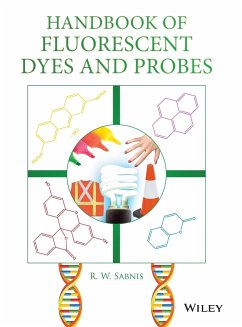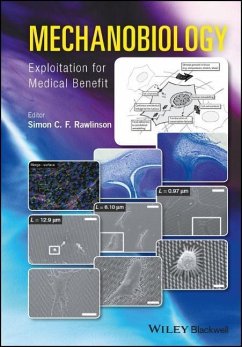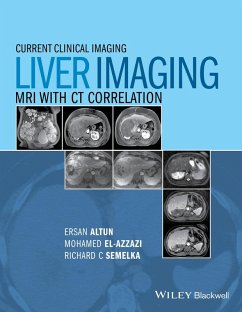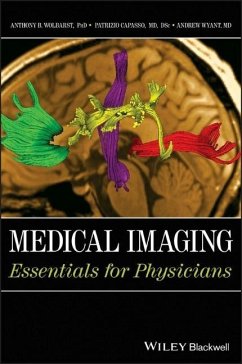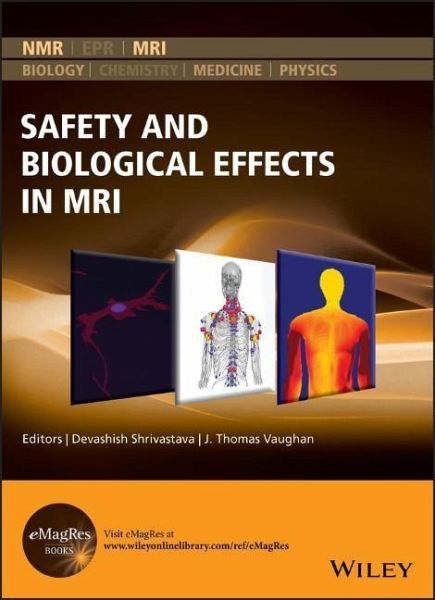
Safety and Biological Effects in MRI
Versandkostenfrei!
Versandfertig in über 4 Wochen
180,99 €
inkl. MwSt.
Weitere Ausgaben:

PAYBACK Punkte
90 °P sammeln!
In vivo magnetic resonance imaging (MRI) has evolved into a versatile and critical, if not 'gold standard', imaging tool with applications ranging from the physical sciences to the clinical '-ology'. In addition, there is a vast amount of accumulated but unpublished inside knowledge on what is needed to perform a safe, in vivo MRI. The goal of this comprehensive text, written by an outstanding group of world experts, is to present information about the effect of the MRI environment on the human body, and tools and methods to quantify such effects. By presenting such information all in one plac...
In vivo magnetic resonance imaging (MRI) has evolved into a versatile and critical, if not 'gold standard', imaging tool with applications ranging from the physical sciences to the clinical '-ology'. In addition, there is a vast amount of accumulated but unpublished inside knowledge on what is needed to perform a safe, in vivo MRI. The goal of this comprehensive text, written by an outstanding group of world experts, is to present information about the effect of the MRI environment on the human body, and tools and methods to quantify such effects. By presenting such information all in one place, the expectation is that this book will help everyone interested in the Safety and Biological Effects in MRI find relevant information relatively quickly and know where we stand as a community. The information is expected to improve patient safety in the MR scanners of today, and facilitate developing faster, more powerful, yet safer MR scanners of tomorrow.
This book is arranged in three sections. The first, named 'Static and Gradient Fields' (Chapters 1-9), presents the effects of static magnetic field and the gradients of magnetic field, in time and space, on the human body. The second section, named 'Radiofrequency Fields' (Chapters 10-30), presents ways to quantify radiofrequency (RF) field induced heating in patients undergoing MRI. The effect of the three fields of MRI environment (i.e. Static Magnetic Field, Time-varying Gradient Magnetic Field, and RF Field) on medical devices, that may be carried into the environment with patients, is also included. Finally, the third section, named 'Engineering' (chapters 31-35), presents the basic background engineering information regarding the equipment (i.e. superconducting magnets, gradient coils, and RF coils) that produce the Static Magnetic Field, Time-varying Gradient Magnetic Field, and RF Field.
The book is intended for undergraduate and post-graduate students, engineers, physicists, biologists, clinicians, MR technologists, other healthcare professionals, and everyone else who might be interested in looking into the role of MRI environment on patient safety, as well as those just wishing to update their knowledge of the state of MRI safety. Those, who are learning about MRI or training in magnetic resonance in medicine, will find the book a useful compendium of the current state of the art of the field.
This book is arranged in three sections. The first, named 'Static and Gradient Fields' (Chapters 1-9), presents the effects of static magnetic field and the gradients of magnetic field, in time and space, on the human body. The second section, named 'Radiofrequency Fields' (Chapters 10-30), presents ways to quantify radiofrequency (RF) field induced heating in patients undergoing MRI. The effect of the three fields of MRI environment (i.e. Static Magnetic Field, Time-varying Gradient Magnetic Field, and RF Field) on medical devices, that may be carried into the environment with patients, is also included. Finally, the third section, named 'Engineering' (chapters 31-35), presents the basic background engineering information regarding the equipment (i.e. superconducting magnets, gradient coils, and RF coils) that produce the Static Magnetic Field, Time-varying Gradient Magnetic Field, and RF Field.
The book is intended for undergraduate and post-graduate students, engineers, physicists, biologists, clinicians, MR technologists, other healthcare professionals, and everyone else who might be interested in looking into the role of MRI environment on patient safety, as well as those just wishing to update their knowledge of the state of MRI safety. Those, who are learning about MRI or training in magnetic resonance in medicine, will find the book a useful compendium of the current state of the art of the field.






